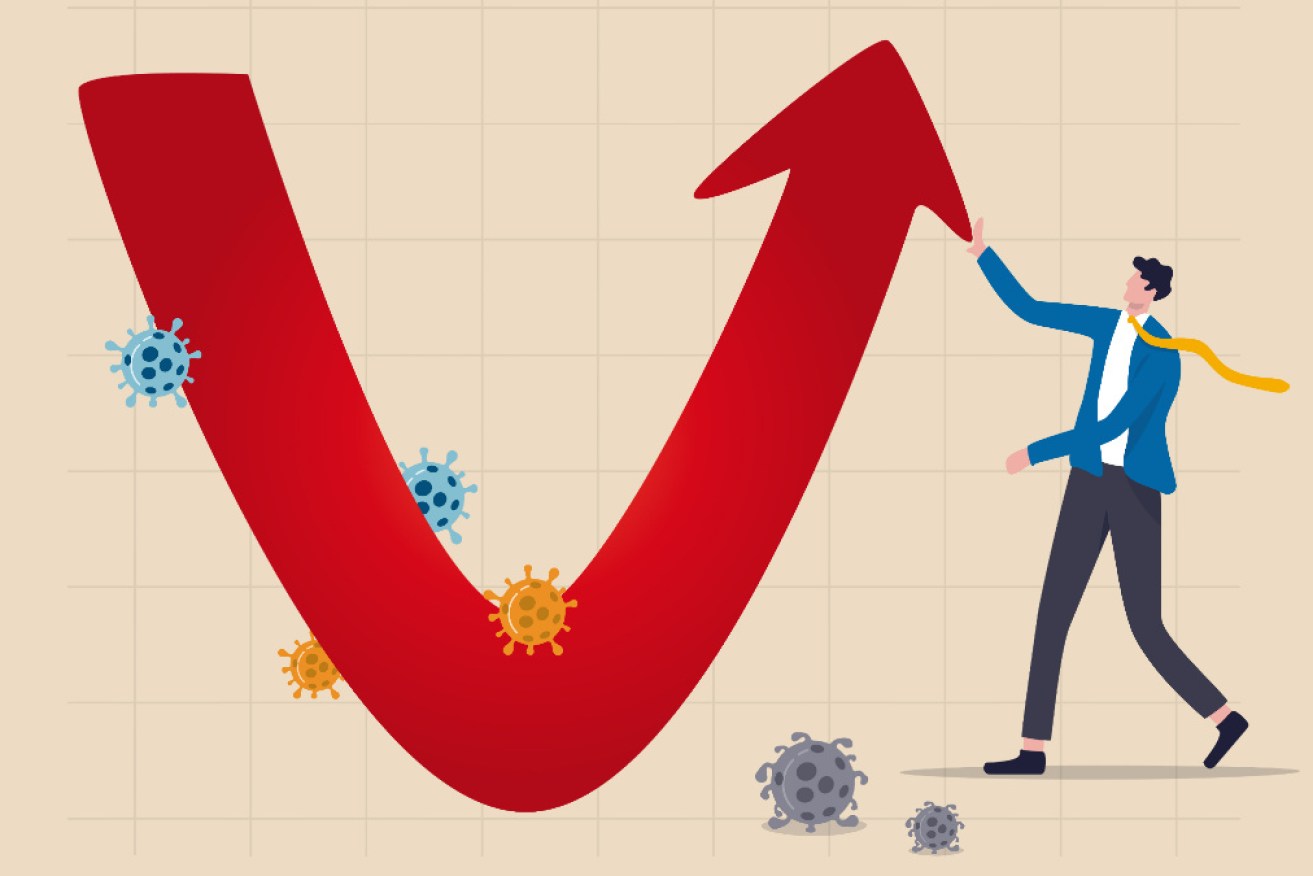Economic recovery about to hit major speed bumps

The recovery has exceeded expectations. But it might not last. Photo: TND
Australians are getting back to work much faster than expected after a year of devastating lockdowns and border closures.
But the strength of the recovery depends on the success of a vaccine rollout that has hit major speed bumps.
Deloitte Access Economics partner Chris Richardson estimates in new forecasts released on Monday that the national economy will expand by 4.9 per cent this calendar year.
That prediction is working on the assumption virus numbers stay low and Australia achieves “the equivalent of herd immunity by late 2021/early 2022”.
He told The New Daily the expansion would slow to 4.5 per cent or so if the latest health advice related to the AstraZeneca vaccine blew out the initial government targets by an additional two or three months or so.
But he was keen to stress the economy was doing much better than most people realised.
“Pretty much for a year now, things have turned out better than people thought,” Dr Richardson said.
“We don’t recognise it, because there’s always a new drama, and right now it’s AstraZeneca for the under 30s.
“But if you actually stop and look at where Australia is – the jobs we’ve gotten back … it’s a remarkably good track record to date.”
The Deloitte economist said the latest setback with AstraZeneca made little difference to his assessment of the removal of JobKeeper – though he noted the recovery would naturally slow down as the economy had made up much of the ground lost during lockdowns.
The wage subsidy ended on March 28 and Treasury officials have predicted as many as 150,000 people could lose their jobs as a result.
But although Dr Richardson acknowledged there would be many stories of individual business closures and job losses when the scheme ended, he said the ongoing recovery in the labour market would absorb the lost jobs within months.
“There are a lot of vacancies out there in Australia at the moment. Although we are losing jobs and long-established businesses and the rest of it, we are making jobs at the same time,” he said, referring to the record number of vacancies in February.
“Come June or July, we will have made back the jobs that we lost as a result of the end of JobKeeper.”

Treasury secretary Steven Kennedy says as many as 150,000 people could lose their jobs as a result of JobKeeper’s removal. Photo: AAP
Allaying inflation fears
The Deloitte report also takes aim at the inflation fears currently gripping financial markets.
Some investors believe governments around the world spent too much money during the pandemic and will trigger a sustained run-up in prices across the economy.
But Deloitte has taken the same position as the governor of the Reserve Bank – describing the recent jump in the cost of some essentials as isolated incidents unlikely to drive sustained inflation.
“To begin with, unemployment and underemployment have to fall enough to give pricing power to workers (to hike wages) and businesses (to hike prices),” Dr Richardson writes in the report.
“Yet unemployment is going to take quite some time to get down to the point that it gooses wages. Wage agreements will take time to reflect stronger bargaining power, and prices will take time to fully reflect faster wage momentum.
“So don’t worry too much if you’re hearing inflation is a threat. Have a Bex and [a] good lie down.”
In fact, Deloitte expects the unemployment rate will stay above 5 per cent until at least 2024.
That is important not only for the more than 800,000 Australians currently without a job, but also for workers itching for a decent pay rise.
This is because the larger the pool of unemployed and underemployed workers – often referred to as “spare capacity” in the labour market – the less bargaining power workers when asking for higher wages.

Stagnant wages are a major concern for Reserve Bank governor Philip Lowe. Photo: AAP
Record-low wages growth
At the moment, workers are contending with annual wages growth of just 1.4 per cent – a major economic headwind that has resulted in much consternation at the Reserve Bank of Australia.
The bank’s governor, Philip Lowe, said in March that the unemployment rate could need to fall as low as 4 per cent – much lower than the current 5.8 – to trigger a material uptick in wages growth.
But Treasurer Josh Frydenberg said at the tail end of last year that he would turn off the stimulus tap and turn his attention to repairing the budget when unemployment fell “comfortably below 6 per cent”.
Leading economists said that was an understandable thing to say when Treasury was warning unemployment could reach as high as 10 per cent.
But they told The New Daily the Treasurer should revise his target in line with the faster-than-expected recovery.
“They should be shifting that fiscal target … comfortably below 6 per cent is far too high,” Grattan Institute CEO Danielle Wood said.
“We don’t know exactly where the natural rate of unemployment is, but I think most economists now think it’s got a 4 if not a 3 in front of it – and with monetary policy essentially out of action, we need to rely on fiscal policy to push us back to a well-functioning economy.”
Meanwhile, University of New South Wales economics professor Richard Holden, who said the delayed vaccine rollout would cost Australia “tens of billions of dollars” in lost economic activity, said he would like Mr Frydenberg to drop his threshold for budget repair “to well below 4.5 per cent”.
He said the experience of the US and UK showed that unemployment had to fall close to historical lows “to get wages growth moving”.








